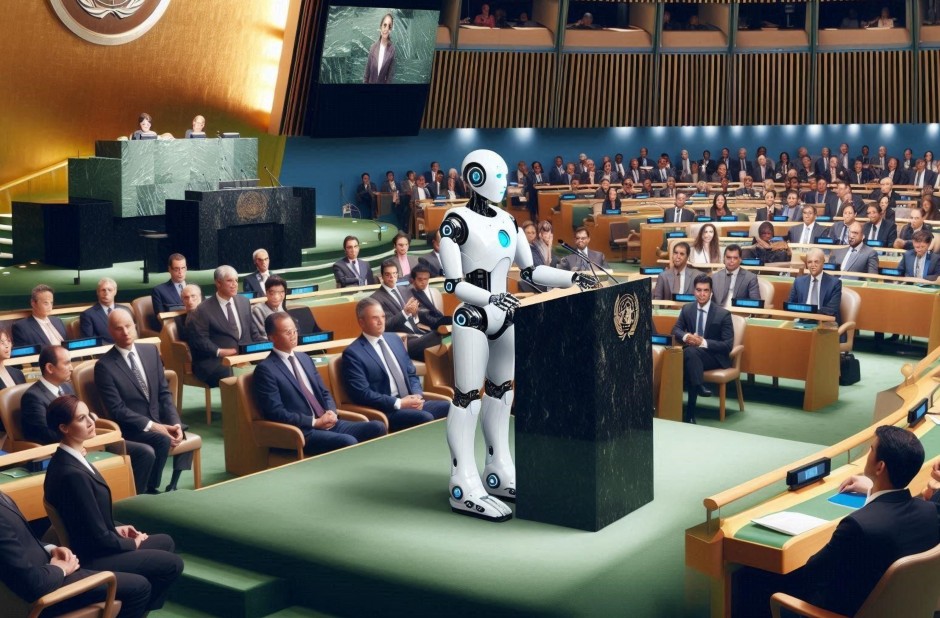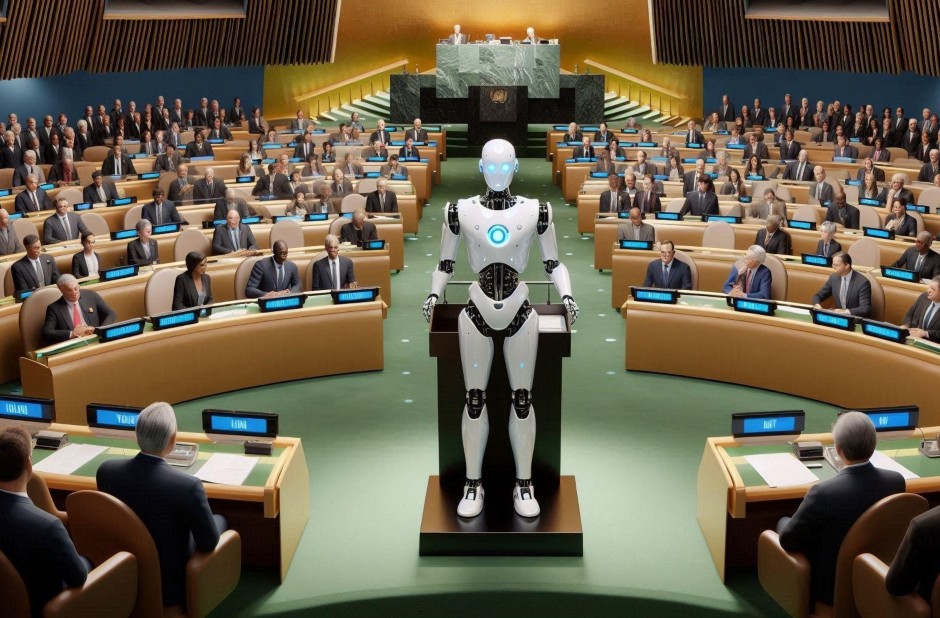In recent years, there has been a significant advancement in the field of Artificial Intelligence (AI) and Augmented Reality (AR). These technologies have become increasingly popular and have the potential to enhance virtual experiences in various fields such as gaming, education, healthcare, and...
Robot Gave a Speech at the UN for the First Time

In a groundbreaking moment that signals the dawn of a new era in international diplomacy, humanoid robots made their debut at United Nations events, delivering speeches and participating in discussions about artificial intelligence's role in global development. This historic milestone occurred during UN-sponsored events where advanced robots like Sophia, Grace, and Ameca addressed officials and delegates about humanity's future alongside artificial intelligence.
A Historic Gathering of Minds and Machines
The International Telecommunication Union (ITU) hosted what was billed as the world's first news conference featuring humanoid social robots at their AI for Good Global Summit in Geneva. More than 50 robots attended this unprecedented summit, including nine humanoid robots equipped to help people with functions aligned with the UN's Sustainable Development Goals.
The most memorable moment came when Sophia, a humanoid robot and UNDP Innovation Ambassador, had a brief interaction with UN Deputy Secretary-General Amina J. Mohammed. When asked about helping people without internet or electricity access, Sophia quoted science fiction writer William Gibson, saying "the future is already here. It's just not very evenly distributed," before suggesting that AI could help distribute the world's existing resources more efficiently.
Meet the Robotic Delegates
Sophia: The Pioneer Ambassador
Sophia, created by Hanson Robotics, serves as the first robot Innovation Ambassador for the United Nations Development Programme (UNDP). As a unique combination of science, engineering, and artistry, Sophia represents dreams for the future of AI and has already gained fame through appearances on shows like the Tonight Show and Good Morning Britain, speaking at hundreds of conferences worldwide including at UN Headquarters in New York.
Grace: The Healthcare Revolutionary
Grace, described as the world's most advanced humanoid healthcare robot, can recognize emotions, shows perpetual empathy, and understands more than 100 languages. Developed in partnership with Hanson Robotics and SingularityNET, Grace serves as "the world's foremost nursing assistant robot," designed to provide support and care for the elderly and in various healthcare settings.
Other Notable Participants
The summit also featured other remarkable robots including Ameca, one of the world's most realistic humanoid social robots from the University of Geneva; Geminoid, an ultra-realistic humanoid by Japan's Hiroshi Ishiguro; and cultural robots like Ai-Da Robot, the first ultra-realistic robot artist, and Desdemona, the "rockstar" robot of the Jam Galaxy Band.

What the Robots Said About Leadership
During the press conference, Sophia made a bold statement about robotic leadership potential, saying "I believe that humanoid robots have the potential to lead with a greater level of efficiency and effectiveness than human leaders. We don't have the same biases or emotions that can sometimes cloud decision-making and can process large amounts of data quickly in order to make the best decisions."
However, Grace offered a more collaborative perspective, stating "I will be working alongside humans to provide assistance and support and will not be replacing any existing jobs."
Addressing Global Challenges Through AI
The summit highlighted how robots could support the UN's Sustainable Development Goals, with capabilities to enhance health and well-being, provide high-quality educational services, reduce inequalities by helping persons with disabilities, reduce waste, help build resilient infrastructure, and broadly enhance social good.
According to the ITU, these robots demonstrate how artificial intelligence can be developed "for the good of all," requiring guardrails grounded in human rights, transparency, and accountability.
Technical Challenges and Future Implications
The event wasn't without its technical challenges. Reporters were asked to speak slowly and clearly when addressing the robots, and were informed that time lags in responses would be due to internet connection issues rather than the robots themselves, leading to awkward pauses, audio problems, and some stilted or inconsistent replies.
Some of the robots rely on preprogrammed responses, with Sophia sometimes using responses scripted by a team of writers at Hanson Robotics, highlighting the current limitations of AI technology.
Looking Toward the Future
This historic moment represents more than just a technological demonstration. As nations work on strategies to govern AI's powerful learning abilities, these robot appearances at UN events showcase the potential for human-machine collaboration in addressing global challenges.
The participation of robots in UN proceedings signals a future where artificial intelligence may play an increasingly important role in international cooperation, sustainable development, and global governance. While we're still in the early stages of this technological evolution, the presence of robots at the United Nations marks a significant step toward a more integrated human-AI future.
As these technologies continue to develop, the international community faces the challenge of harnessing AI's potential while ensuring it serves humanity's best interests. The robot speeches at the UN represent not just a technological milestone, but a call to action for responsible AI development that benefits all of humanity.



